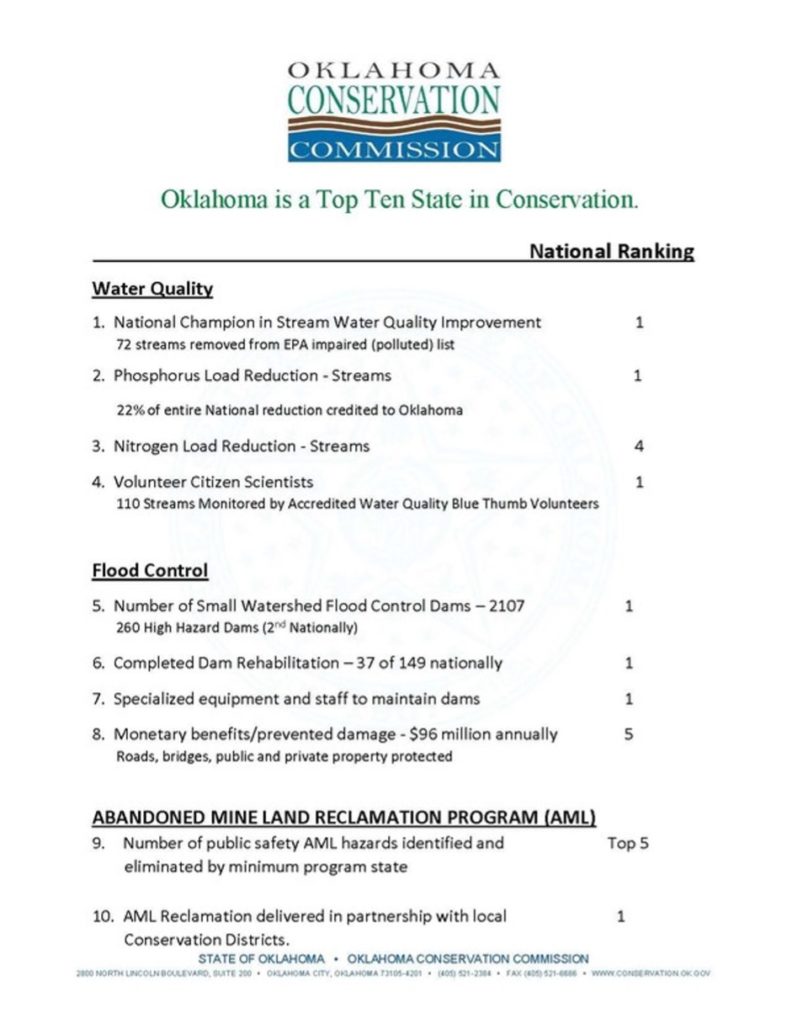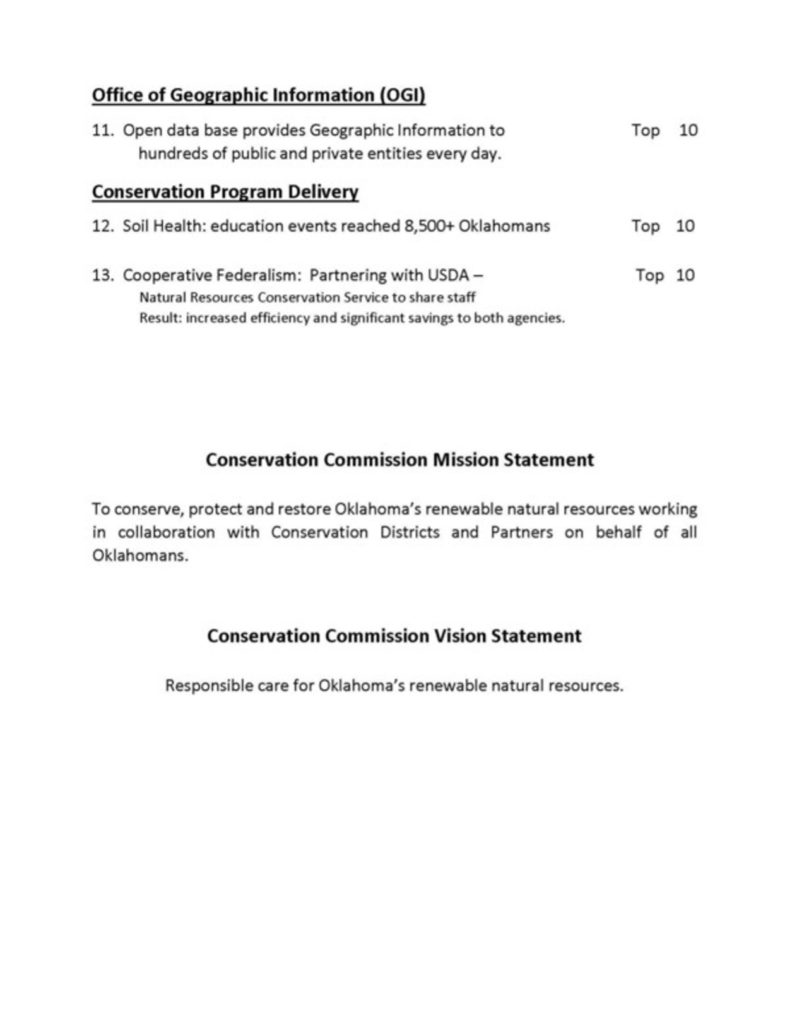Watershed Year for Conservation in Oklahoma
In the history of Conservation work in Oklahoma there have been several Watershed moments – a turning point – that changed the future of our state for the better.
These include the Dust Bowl, resulting in the formation of Conservation Districts along with Federal and State agencies.
Another was the devastating flooding during the first half of the 1900s that inspired Public Law 534 and 566. Under these, came the construction in Oklahoma of the 2,107 flood control dams.
An additional example is the Clean Water Act which provided the opportunity to tie land conservation to water quality improvement eventually making Oklahoma the national leader in stream water cleanup.
It is also very possible we are living in a watershed moment, right now.
“When we look back on 2019 and 2020 we may well recognize this as another major turning point in Natural Resource Conservation in Oklahoma,” said Trey Lam, Executive Director of the Oklahoma Conservation Commission. “Once again conservation, protection and restoration of Oklahoma’s renewable natural resources are a high priority to our state.”
“Over the course of the last several legislative sessions, the partnership has been focused on educating elected officials about the importance of voluntary conservation in our communities. The results of the 2019 legislative session proves that conservation district directors and employees have built strong relationships with their local officials and have done a wonderful job articulating the needs of conservation districts,” said Sarah Blaney, Executive Director of the Oklahoma Association of Conservation Districts.
Gary O’Neill, Oklahoma Natural Resources Conservation Service (NRCS) State Conservationist, said, “Having boots on the ground to provide the one-on-one assistance to private landowners has always been an essential component of the Oklahoma partnership. Having shared staff that are focused on providing this assistance will result in more conservation getting applied on the Oklahoma landscape. Sharing staff resources continues to be an efficient way to assist Oklahoma farmers and ranchers in addressing their conservation needs. This results in a win-win opportunity for the partnership and for farmers and ranchers in Oklahoma.”
There are so many examples to support the excitement generated by the progress resulting from the Conservation Partnership in Oklahoma.
For example, we have seen a 22% increase in State Conservation funding.
“Or take a look at the reauthorization of the Conservation Infrastructure Fund,” Lam said. “Through that, we see $2.6 million per year in gross production taxes directed to the Locally Led State Cost Share Program.”
Speaking of local, there are strides such as a $1 per hour pay increase for Conservation District employees. Also, 19 local Conservation District staff have been restored across the State, of which 12 are shared and funded in partnership with United States Department of Agriculture (USDA) NRCS and three are field technicians funded through an National Association of Conservation Districts (NACD) grant. There are seven Conservation District staff members where offices recently did not have a full-time employee.
“We know that our number one asset is our conservation district employees,” Blaney said. “Without dedicated conservation district employees, our programs would not be successful. While we still have a ways to go to ensure that we are able to hire and retain quality employees, the progress made in additional funding both last year and this year are a step in the right direction.”
Now looking statewide, there are four new dam watershed aid staff positions who are outfitted with skid steers, trucks and trailers. Also, $5.1 million in bonds were sold to match Federal funds to rehabilitate high hazard dams. Plus, the latest budget includes a $2 million increase in operations and maintenance funding for 2017 dams. There’s also the $500,000 State commitment for public private partnership to put $2.25 million into conservation around poultry farms in eastern Oklahoma.
“This new commitment to conserving, protecting and restoring natural resources, positions Oklahoma to continue as a Top 10 State in Conservation,” Lam said.
“The future for conservation in Oklahoma is bright,” Blaney said. “We are grateful to the legislature for their investment in our small watershed program and excited about new opportunities for increased conservation efforts in northeast Oklahoma as the poultry industry continues to grow in this part of our state.”
“The partnership has always worked with private landowners in a voluntary and a non-regulatory approach,” O’Neill said. “USDA NRCS has always worked with local Conservation Districts to ensure that conservation assistance is based on a locally led process and reflects the priority resource concerns of the local area.”
Included is a list of the categories in which the Oklahoma Conservation Partnership leads the country in protecting our soil and water.
“As you look at this list, imagine the future successes this influx of resources will produce,” Lam said. “Local Conservation Districts partnering with the USDA NRCS and the Oklahoma Conservation Commission attained these Top 10 finishes during a crippling economic recession that forced funding and staff cuts. With the Conservation Team restored to near full strength, Oklahoma is poised to set the national standard.”


